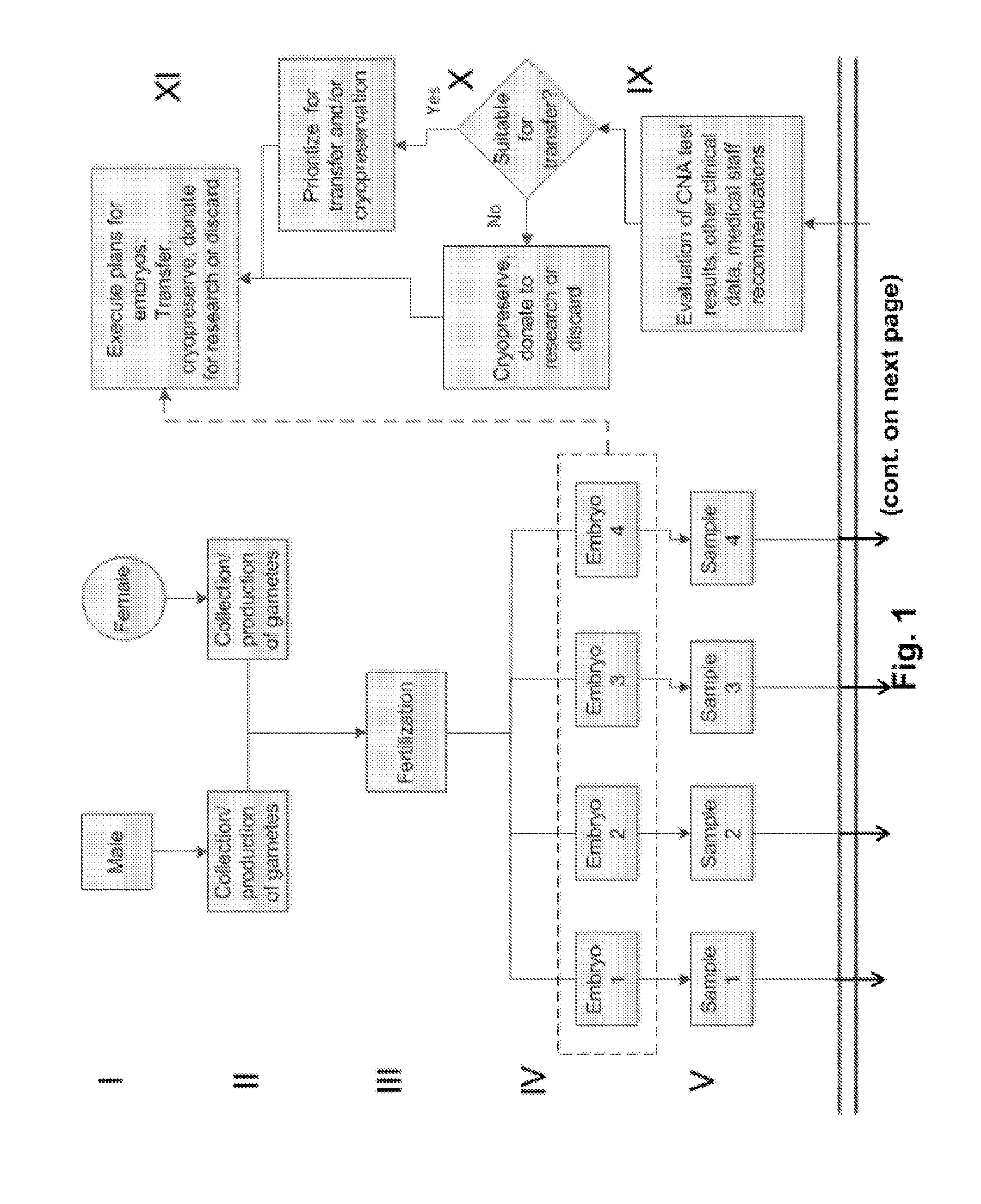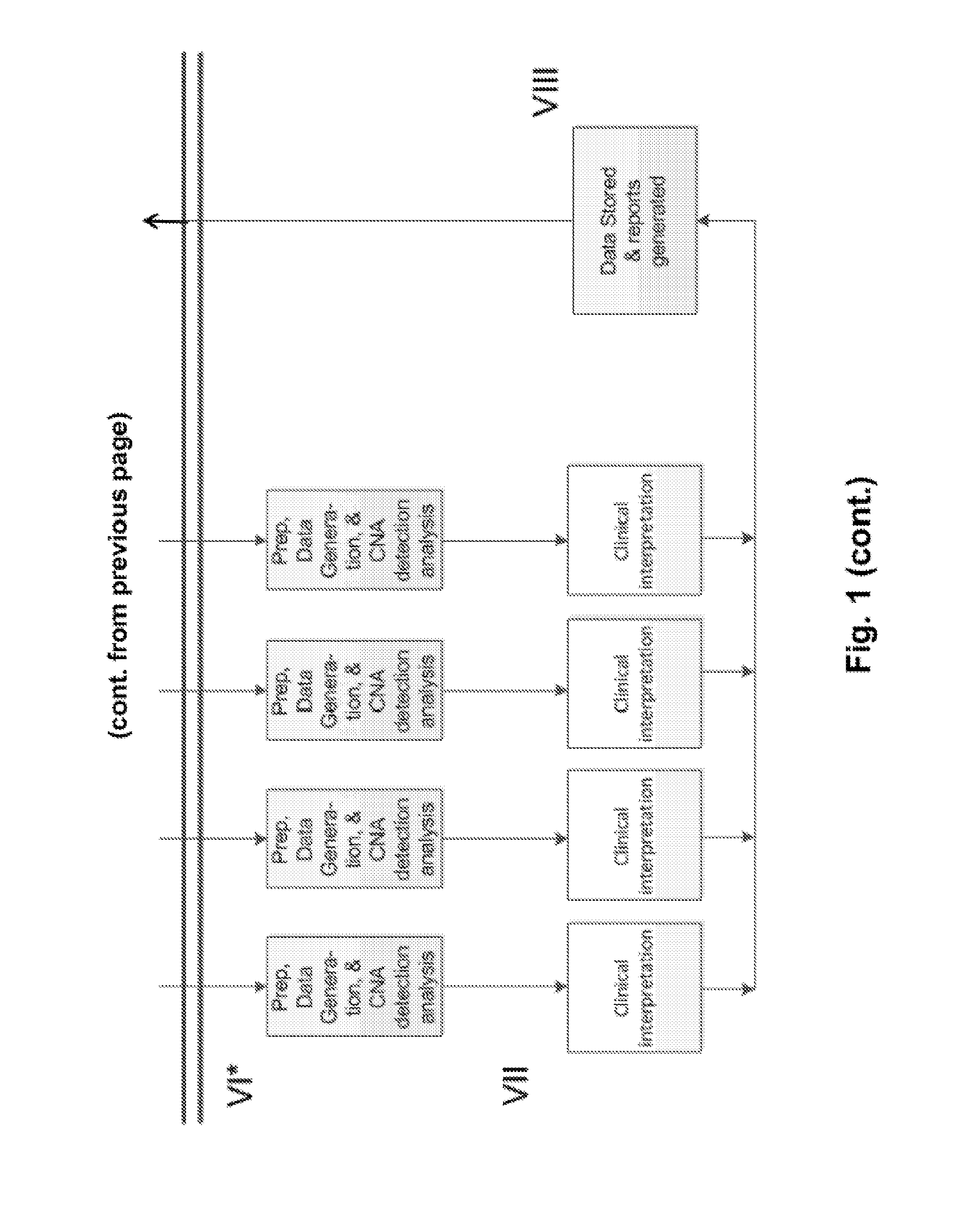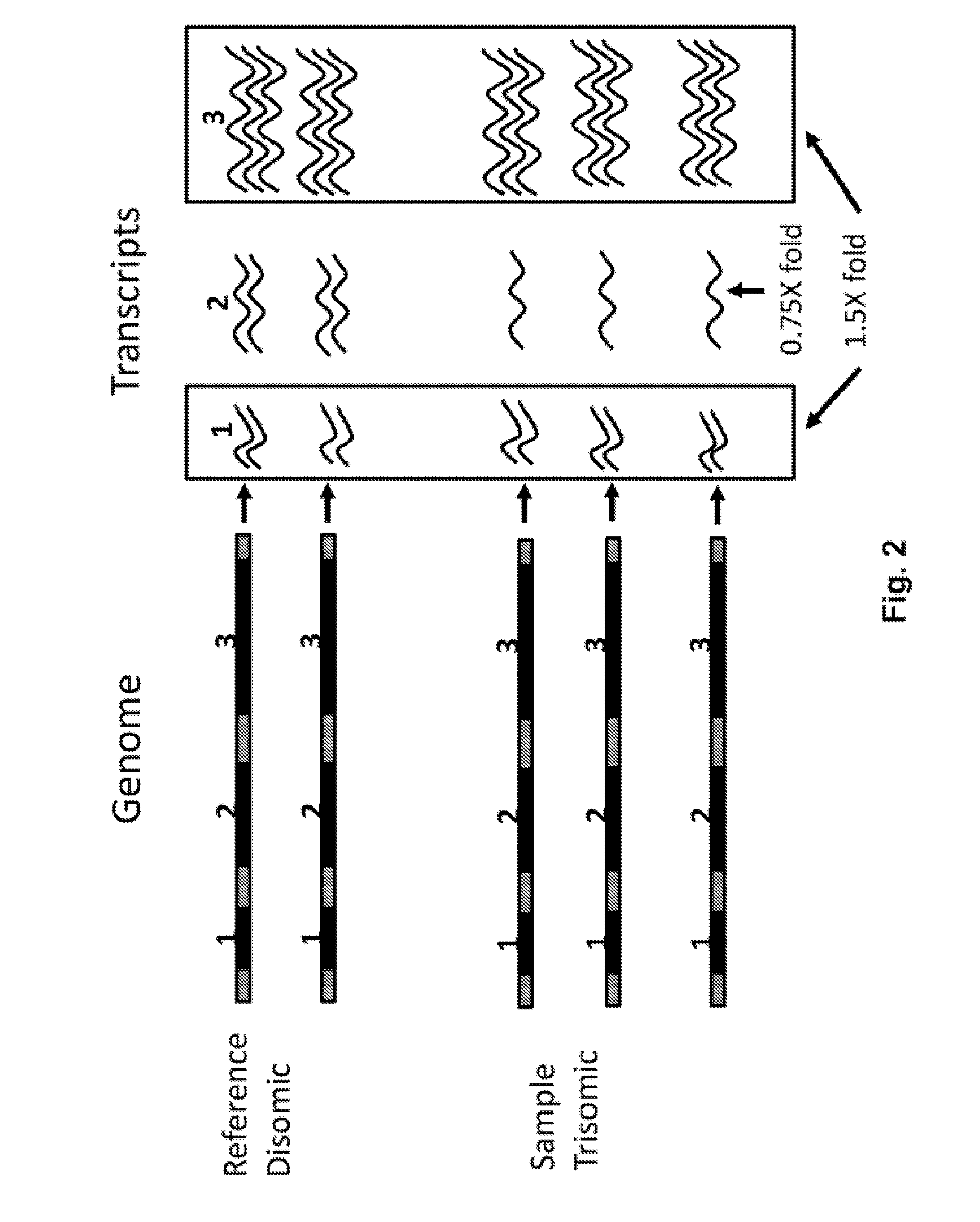Compositions and methods for genetic analysis of embryos
a technology of genetic analysis and embryos, applied in the field of compositions and methods for genetic analysis of embryos, can solve the problems of high rate of genetic abnormalities, abnormal number of copies of segments of the genome, and prone to various genetic alterations in human embryos, including those generated through assisted reproductive technologies (art)
- Summary
- Abstract
- Description
- Claims
- Application Information
AI Technical Summary
Benefits of technology
Problems solved by technology
Method used
Image
Examples
example 1
XI.A. Example 1
Demonstration of a High Correlation Between Copy Number and Locus Expression in Preimplantation Embryos
[0309]In this example, the effects of aneuploidy on the transcriptome of preimplantation mouse embryos were evaluated.
Methods
[0310]Generation of animals. Large numbers of mouse embryos with whole chromosomal aneuploidies were produced by using a sire that carries two Robertsonian (Rb) chromosomes, chromosomes formed by centromeric fusion of 2 chromosomes, with a common chromosomal arm, known as monobrachial homology. During meiosis, segregation between these two Rb chromosomes is impaired, leading to the production of gametes and embryos that are aneuploid (monosomic or trisomic) for the common arm chromosome as shown in FIG. 20. For this study, male mice doubly heterozygous for 3 pairs of Rb chromosomes with monobrachial homology for chromosomes 10, 11 and 15 were used to generate embryos. Fluorescent in situ hybridization of sperm from these males showed aneuploidy...
example 2
XI.B. Example 2
Transcriptome Analysis of Human Lymphoblast Cells that Carry a Deletion
[0320]Results of analyses of RNA-Seq data from a human lymphoblast line carrying a 34 Mb deletion of chromosome 21 are presented. The interstitial deletion removes about 70% of the chromosome. This study includes analysis of data from samples generated from both a large amount of input material as well as an amount of input material comparable to the amount that would be present in a typical blastocyst biopsy. The goals of this study are two-fold: (1) assess the impact of this deletion on the transcriptome using the large input sample and (2) determine if any observed expression alterations can be detected in a low input sample.
Methods
[0321]Cell culture. Three lymphoblast cell lines derived by EBV transforming peripheral lymphocytes from different individuals were obtained from Coriell: (1) GM10857, a female line with no detectable large copy number alterations, (2) GM10851, a male line with no det...
example 3
XI.C. Example 3
Evaluation of RNA-Seq Data from Human Embryos
[0331]In this example, publically available RNA-Seq data generated from mural trophectodermal cells from 2 human blastocysts are analyzed. The goals of this study are to compare the data to the lymphoblast data from a small number of cells and compare the two samples to see if there is any evidence of a copy number alteration.
Methods.
[0332]Sample collection and data generation. The methods used to generate the data are described in detail in the report by Yan et al ((2013) Nat Struct Mol Biol 20: 1131). Briefly, single cell samples were collected from dissociated blastocysts and transferred into lysis buffer. The protocol for generation of RNA-Seq data from these lysates is described in Tang et al (2010) Nature Protocols 5: 515, incorporated herein by reference). Briefly, this approach involves the generation of cDNA using an oligo(dT) primer, polyadenylating the first strand with terminal transferase, priming the second st...
PUM
| Property | Measurement | Unit |
|---|---|---|
| temperature | aaaaa | aaaaa |
| time | aaaaa | aaaaa |
| time | aaaaa | aaaaa |
Abstract
Description
Claims
Application Information
 Login to View More
Login to View More - R&D
- Intellectual Property
- Life Sciences
- Materials
- Tech Scout
- Unparalleled Data Quality
- Higher Quality Content
- 60% Fewer Hallucinations
Browse by: Latest US Patents, China's latest patents, Technical Efficacy Thesaurus, Application Domain, Technology Topic, Popular Technical Reports.
© 2025 PatSnap. All rights reserved.Legal|Privacy policy|Modern Slavery Act Transparency Statement|Sitemap|About US| Contact US: help@patsnap.com



